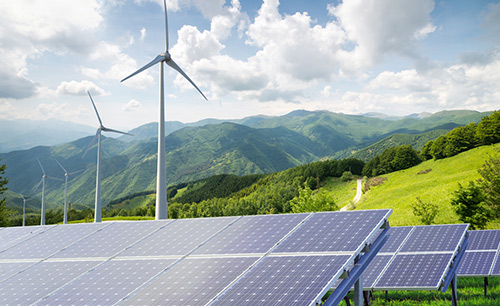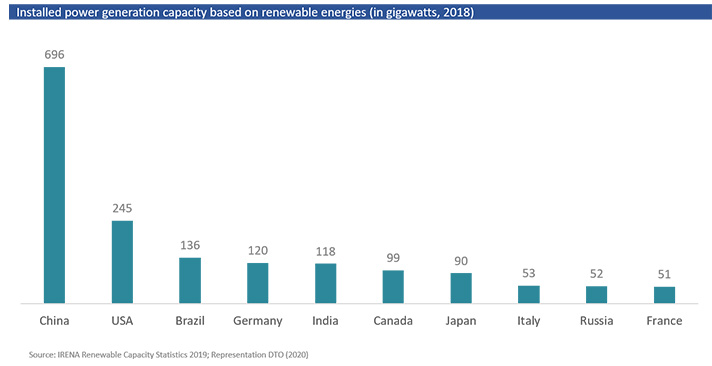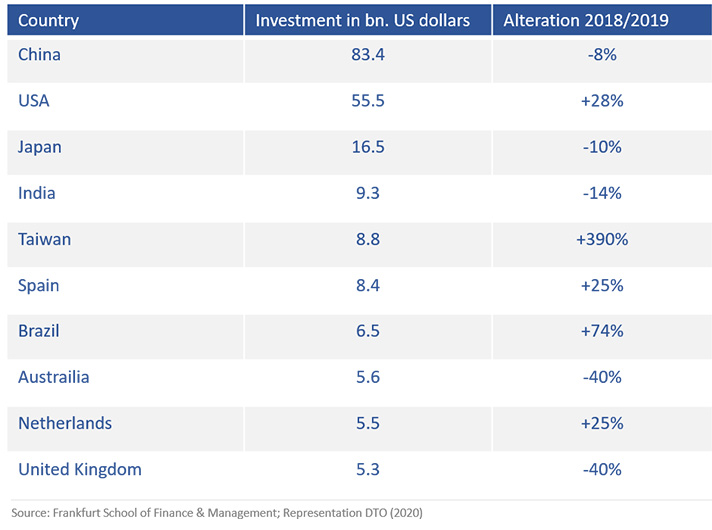
The energy turnaround - Will the planned expansion suffice to supply industrialism?
While the expansion of renewable energies in Germany has come to a standstill due to long discussions about distance regulations in the wind power sector, the global share of alternative energies is constantly increasing.
Status Quo
With a total of 194 gigawatts in 2019, more renewable energy plants have been built than ever before. Photovoltaic power accounted for the largest portion of this with 118 gigawatts, making it the lion's share of all alternative energies. Climate targets and the pressure to innovate are boosting the expansion of renewable energies. In addition, the cost of producing renewable energy has fallen considerably over the past ten years. The biggest drop in prices has occurred for photovoltaic systems. Average costs for these systems have fallen by 83 percent! In the case of offshore wind energy, the price reduction for turbines was 51 percent, while for onshore wind energy there was a 49 percent drop in price. It is also important to note that more than half of the investments in renewable energies made worldwide in 2019 took place in emerging and developing countries.

The crux of climate policy
The industrial sector accounts for around a quarter of global CO2 emissions. More and more plans to reduce this burden are now being put on the agenda of politicians and industrial companies. With the expansion of renewable energies, the production of green hydrogen as an energy carrier is also gaining in importance. This is because it can serve as a storage medium for the electricity generated and can also be used for various applications, such as blast furnaces. The demand for such "green solutions" is unquestionably on the rise. Many companies are striving to introduce these new technologies in order to set new standards in innovation and climate protection. However, despite all the positive appearances of climate policy, there is still the impression that the political decisions that are meant to confirm this development in the long term are often taken on a situational rather than a goal-oriented basis.
One example of this is the Renewable Energy Sources Act (EEG), which was recently presented by the German government. The aim of the "EEG 2021 amendment" is to create the necessary legal conditions to ensure that all the electricity produced is climate-neutral by 2050 at the latest. By the year 2030, this goal should already be 65 percent attained. Critics complain that the EEG wrongly fails to take into account that electricity consumption in 2030 will be higher than in 2020 and that the planned expansion of renewable energies will therefore not be able to fully compensate for the higher demand in the future. The new regulation also provides that subsidies for electricity production from future EEG plants will not be granted if the exchange electricity price is negative at a certain interval. Income from produced electricity thus becomes uncertain and difficult to plan, which could ultimately have an impact on plant prices.
This shows that there is still a need for improvement on the part of politicians. Whether that be through an explanation of why such restrictions exist or by creating regulations that allow plant operators to establish better planning. The President of the European Commission, von der Leyen, has also shown that new, tougher and not completely comprehensible guidelines are not necessarily met with understanding. Only recently presented, the EU's new target is to reduce industrial emissions by 55 percent by 2030 instead of the 40 percent previously communicated (reference emissions from 1990). This target came as a surprise and presents companies with major challenges. The companies already affected by the corona crisis will be faced with high investment sums, which will lead to a heavy additional burden.
What happens next?
Worldwide, 87 governments have committed themselves to installing a further 826 gigawatts of renewable energy by 2030. The investment capital associated with this comes to a value of around one trillion US dollars. However, if we look at the last ten years, 1,213 gigawatts have been created worldwide with an investment volume of 2.7 trillion US dollars. Consequently, despite falling plant costs, the next ten years will see a significantly lower expansion than in the same time period of the past decade.


The corona crisis has also contributed to slowing down decisions, which will likely lead to expansion slowdowns in many places from 2020 onwards. Nevertheless, expansion is not only important for achieving the defined climate targets, but also offers an opportunity to orient the economy towards the future and towards sustainability. In fact, faster expansion is essential to meet the stricter emission targets. The current sharp drop in investment costs must be an incentive to press ahead with the further expansion of renewable energy projects as part of economic stimulus packages. It is also important (especially now) to create incentives and not to surprise companies with stricter requirements so that planning can be guaranteed despite difficult times. All things considered, it is evident that the planned investments in renewable energy projects and green hydrogen are far from sufficient to meet the necessary demand, let alone ensure competitive energy prices.
Text written by Rickmer Görner
More Information
If you would like more information on this topic, please contact us. We are also happy to help you with all other questions within industrial market research and strategic consulting.